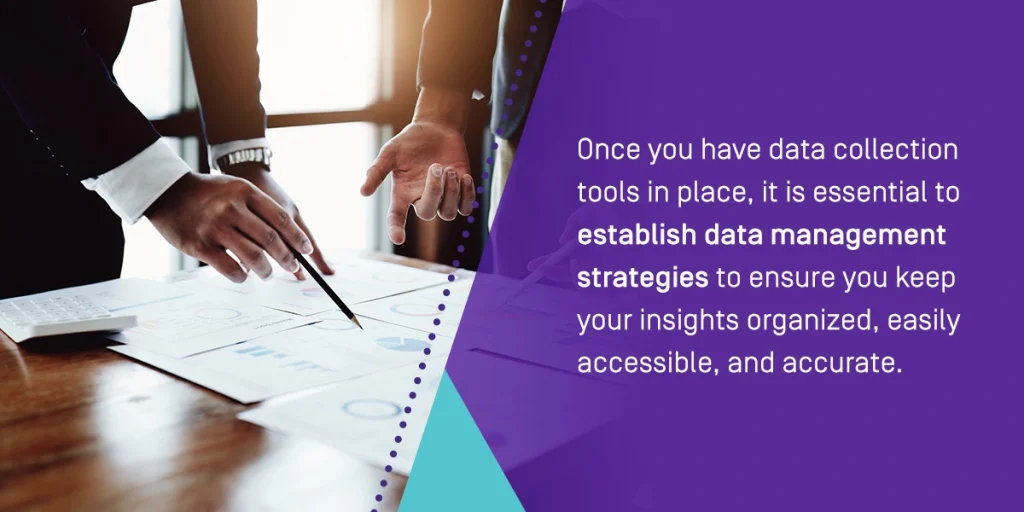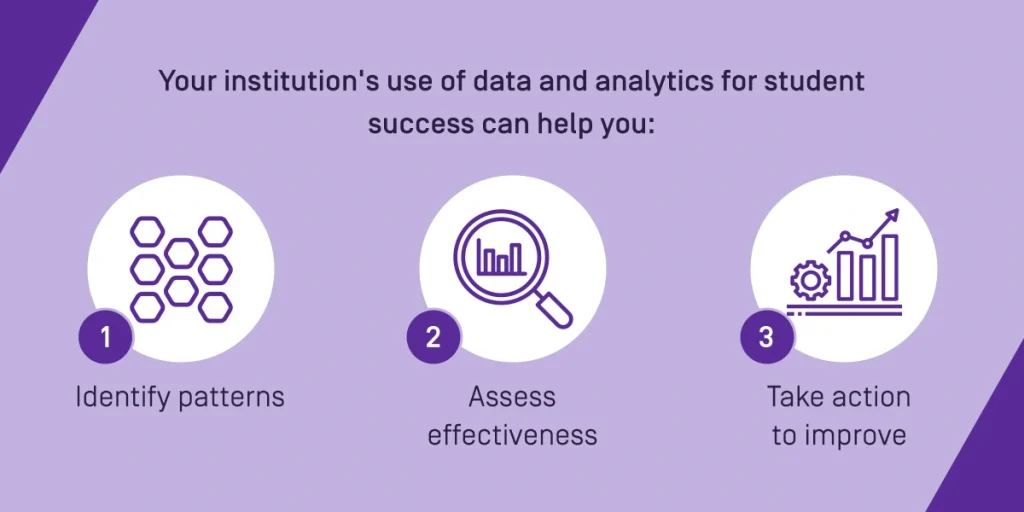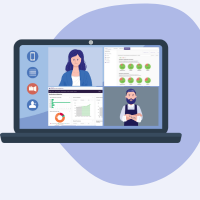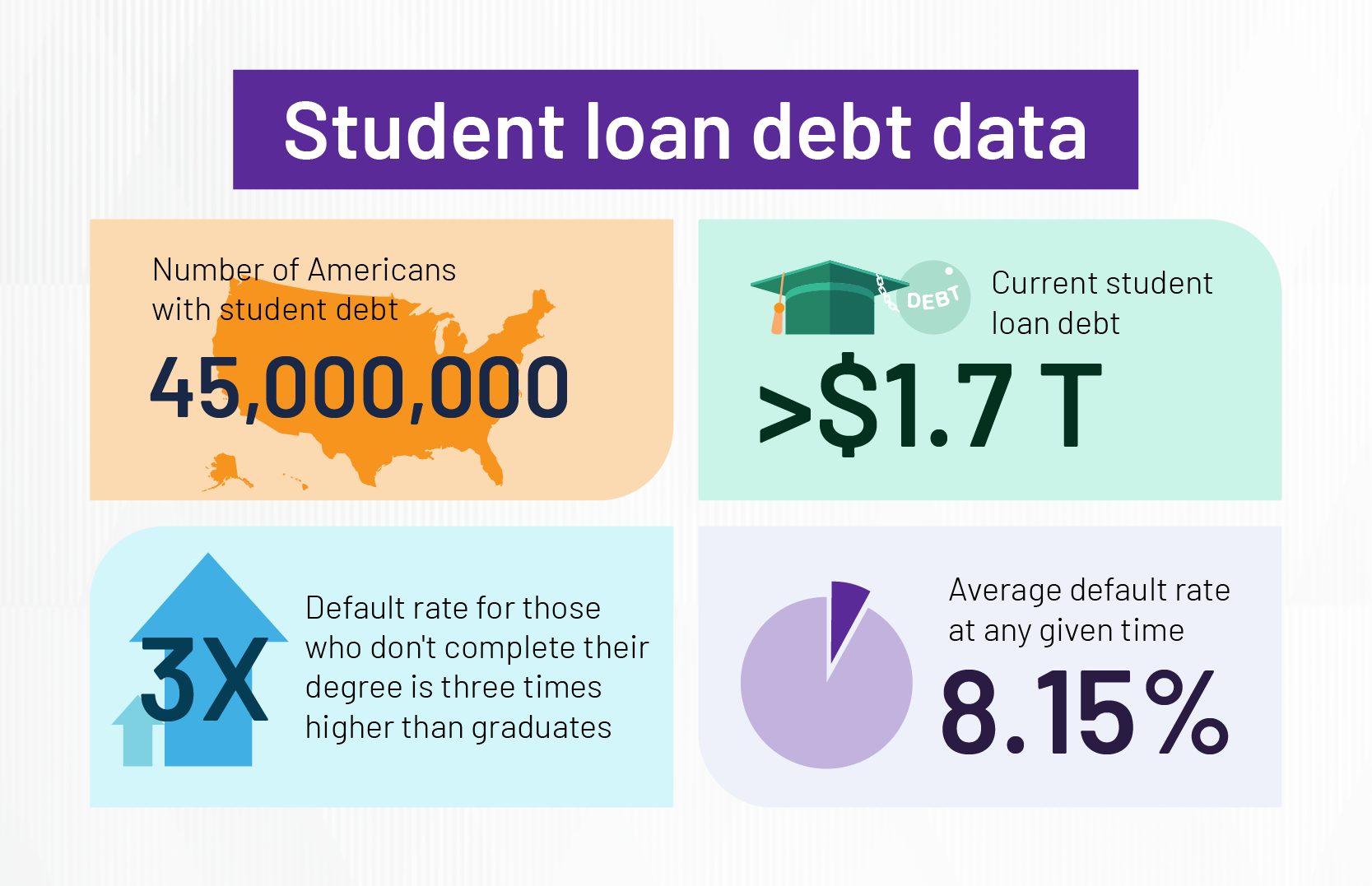
Leveraging institutional data is one of the best ways to make planning easier for your higher education institution. Accreditation planning is simpler and more effective when your college or university can rely on data concerning daily operations, student outcomes, and overall effectiveness.
Data is an invaluable tool for higher education, from helping your school identify improvement opportunities within your current processes to demonstrating evidence of your efforts to meet tough accreditation standards.
Learning how to effectively use institutional data will help enhance academic outcomes and ultimately lead to greater student success.
What happens when your institution doesn’t use data effectively?
Data is a powerful tool that can help businesses, nonprofits, colleges, and universities supercharge their operations. However, if your institution doesn’t have the right tools or isn’t maximizing the positive impact of your data with proper management practices, it could fall short of the competition.

Explore the primary downsides of ineffective data management for higher education institutions:
- Poor resource allocation: Your university or college cannot make the best decisions regarding resource allocation without the help of institutional and programmatic data. These insights are integral to finding the right areas within your operation to distribute funds, position faculty members, and identify areas needing improvement.
- Ineffective curriculum planning: Having data about your student body, their performance, engagement levels, and learning outcomes is invaluable when planning a curriculum. Your institution can use the information it collects to revise, enhance, and optimize the student experience using data-driven course materials and teaching methods. An institution that does not have these tools cannot fully optimize its courses.
- Inadequate student support: Without adequate data practices, your institution may not recognize and extend resources to students who need additional support in a timely and effective manner. Whether learners are struggling with performance, attendance, or other factors, good data management can help colleges and universities quickly identify students who could benefit from extra support.
- Uninformed institutional planning: Forecasting and planning for your institution’s future is not complete without help from a comprehensive data solution. These insights can increase how accurate your institution’s predictions are regarding the potential challenges and growth opportunities on its horizon.
- Less effective decision-making: From admissions to faculty hires to project investments to student services, the decisions your institution makes will influence its destiny. By relying on data-driven insights, your university or college can validate and inform its choices and harness a brighter future.
- Fewer improvement opportunities: If your institution does not have access to quality data, it cannot easily identify all of the areas within its operations that require attention or improvement. Effective data leveraging is key to capitalizing on your college or university’s opportunities to grow and thrive.
- Compromised reputation and competition: Another downside of inadequate data management is not being able to demonstrate your institution’s commitment to excellence. It could fall behind the competition by failing to adapt and innovate to meet the changing needs of students and staff.
- Deficient accreditation preparation: A huge disadvantage of not having good data practices is the struggle to meet strict standards from accrediting bodies. Your institution can boost its efforts to align with these guidelines and achieve optimal performance by using data to guide reform.
Why is data so important for higher education?
Data-driven insights are key to unlocking your higher education institution’s full potential by reaping the following benefits:
- Optimizing efficiency
- Supporting student success
- Measuring institutional impact
- Streamlining reporting
- Simplifying accreditation planning
When your college or university is ready to fine-tune its processes to receive or maintain accreditation, data is one of your greatest resources. However, merely gathering these insights is not enough to take your operations to the next level. You have to harness the right tools and follow proper management practices to make data analytics work for your institution.
How to use institutional data to streamline accreditation planning
Once you understand how to use college data to make accreditation planning easier, your institution can enjoy a more manageable, strategic and fruitful process.
Explore the following steps for leveraging data to optimize accreditation preparedness:
1. Review accreditation standards
The ultimate objective of accreditation is to demonstrate your institution’s commitment to providing a quality education. Colleges and universities rely on this process to validate their eligibility for government funding, improve their reputation, and give their learning programs credibility.
Your institution can benefit from using data to supercharge accreditation preparation. But, before diving into your college or university’s insights, it is essential to thoroughly review the accreditation standards your school must meet.
These requirements will offer a baseline for performance and quality regarding various aspects of your institution:
- Course curriculums
- Student learning outcomes
- Graduation rates
- Faculty qualifications
- Financial information
- Institutional achievement
With a deep understanding of the applicable eligibility requirements from the accrediting body, your institution can take a strategic approach to assessing its current operations.
2. Choose data collection solutions
Having data collection products and tools is key to helping your college or university gauge how campus systems, programs, and practices perform. You can use the insights gathered from these solutions to identify baseline metrics for areas where your institution falls short of eligibility requirements.
As you gain insight into these processes, you can create a strategic plan for addressing areas of improvement and reaching important standards. Data offers clear and specific starting points for the accreditation process that your institution can use to its advantage.
Your college or university can benefit from selecting software designed specifically for higher education with favorable data governance to boost quality, security, and usability. Ensure you select collection tools that make sense with your accreditation goals and offer adequate insights into your key processes.
3. Establish data management strategies

Once you have data collection tools in place, it is essential to establish data management strategies to ensure you keep your insights organized, easily accessible, and accurate.
Your institution’s data management strategies will play an important role in reaching strict accreditation standards. Keeping data arranged systematically and in one centralized location can help your teams enhance collaboration across your campus or campuses.
Collected data should be easy to access and analyze so your institution can eventually utilize it for identifying the following regarding accreditation requirements:
- Trends
- Patterns
- Strengths
- Weaknesses
Proper management techniques will help your college or university save time and energy while maximizing the potential of your data. Ultimately, these strategies will determine the accuracy and effectiveness of the efforts you put into improving processes across your institution to gain accreditation, boost learning outcomes, and provide the best experiences possible for your students and staff.
4. Conduct gap analysis and self-assessments
Your institution’s use of data and analytics will play a critical part in both accreditation gap analysis and self-assessments. Comparing the accreditation standards you are trying to reach and the current status of your college or university’s systems will help you understand what areas to prioritize while improving your organization.
To conduct a gap analysis, your school will use its data findings to identify where your institution is lacking. This process is highly beneficial for saving time and energy because it allows you to easily determine what processes are hitting the mark and which need additional attention.
Self-assessments are integral to the accreditation method and ensure your university or college is ready for a site visit from a member or members of the accrediting body. Having access to relevant data is invaluable for this process and makes planning easier and more organized than ever before.
5. Implement a strategic improvement plan
The insights gleaned from a gap analysis and self-assessment are very valuable. Use them to create a plan that includes the steps your institution will take to address the areas that require improvement.
For example, a college or university looking to improve its curriculum design may begin by gathering data to assess:
- Existing curriculum.
- Course syllabi.
- Learning outcomes.
- Assessment methodologies.
Then, they would engage with faculty, students, and key stakeholders to gather more feedback about its curriculum design. The institution can use its data and these insights to create a strategic improvement plan that includes:
- New learning outcomes.
- Curriculum mapping framework.
- Revised assessment methods.
- Faculty development initiatives.
- Comprehensive documentation and reporting protocols.
Your college or university can use its plans to align with accreditation standards and further demonstrate its commitment to delivering the best student experiences.
6. Track student outcomes
Tracking student outcomes is highly important for an institution looking to receive accreditation. Most accreditors emphasize learner success as a top benchmark for colleges and universities. These outcomes may include:
- Retention rates.
- Graduation rates.
- Employment rates.
- Student satisfaction.

Your institution’s use of data and analytics for student success can help you:
- Identify patterns: Data analysis will help you find patterns and trends within your student body. You can gauge their performance and behavior to determine if there are opportunities for additional student support.
- Assess effectiveness: Your insights will also help you determine how helpful your operations are in supporting your student’s success and helping them reach the next level.
- Take action to improve: Analyzing your data will also help you take the necessary actions and make changes to boost student outcomes.
The ultimate goal of becoming an accredited college or university is to provide your students with a high-quality educational experience that allows them to flourish and succeed beyond graduation day.
7. Monitor progress and institutional effectiveness
The next step in streamlining accreditation planning is monitoring your institution’s progress. Once you’ve executed your strategic improvement plan, continue to collect and assess your data to determine what areas of your operation are working effectively. As you look at your insights, be sure to track your progress along the way. This will help you easily fine-tune your processes as needed, furthering your improvement initiatives. By keeping a record of your progress, you can demonstrate your institution’s dedication to meeting the accreditation standards.
Schools should also monitor institutional effectiveness in key areas of operation, including governance, resources, and continuous improvement processes. Institutional data can be a huge asset here, helping you track:
- Resource allocation and budgets.
- Faculty qualifications.
- Advancement initiatives.
Monitoring and tracking your progress can streamline accreditation planning, allowing your institution to make an ongoing effort to align with accreditation standards and see how far you’ve come.
8. Leverage data analytics and visualization
Leveraging the immense power of data analytics and visualization tools can be a huge asset to the accreditation planning process. Your institution can use them to inform your decision-making and communicate your findings with stakeholders in a digestible, efficient way.
Some of the other ways data analytics and visualization tools can help with accreditation include:
- Simplifying complex data: Visualization tools that translate data into dashboards, charts, or graphs can help your college or university communicate complicated ideas in an easy-to-understand manner.
- Improving data transparency: Your institution can use analytics and visualization to increase both the accessibility and transparency of its data, helping your accreditor gain clear and comprehensive insight into your operations.
- Demonstrating compliance: A massive advantage of using these tools is communicating your institution’s eagerness to share its performance and progress in meeting accreditation goals.
9. Document and create reports
The next step for using institutional data to streamline accreditation planning is creating a comprehensive and systematic documentation protocol. Your college or university can benefit greatly from keeping detailed records of everything relating to the accreditation and improvement process, including:
- Data analysis.
- Strategic action plans.
- Implementation efforts.
- Revisions or enhancements.
- Outcomes.
This documentation will be a key asset to your accreditation process because it can serve as evidence during your review and on-site visits. When creating your institution’s reports, be sure to include detailed information about the lengths you’ve gone to to align with the accreditor’s standards. Highlight how your college or university takes a data-driven approach to achieve excellence and exceed expectations.
10. Prioritize continuous improvement
Higher education institutions can use data to inform continuous improvement efforts and ultimately promote a shared mindset of growth and advancement, helping them master accreditation planning at every level.
Data-informed decision-making is the cornerstone of progress for today’s colleges and universities. Inviting students, faculty, administrators, and stakeholders to join conversations about using data to supercharge daily operations across campus is a great way to inspire a culture of continuous improvement. This dialogue also helps your institution meet accreditation standards across various departments faster.
When continuously refining, editing, and enhancing your processes is part of your institution’s DNA, it creates a domino effect and inspires more positive change. Fostering this kind of culture makes accreditation planning simple.
Request a demo of Watermark software today
If your higher education institution is looking to capitalize on its data to achieve greater student success and streamline the accreditation process, turn to Watermark. Our software solutions are here to help your campus supercharge its operations with tools to gather, analyze, and act on your institutional and programmatic data.
With Watermark Planning & Self-Study, you can access accreditation readiness tools to gain greater insights into your operations, students, and institution overall.
Interested in learning more about Watermark solutions? Request a demo of our assessment and accreditation management software today.
















































































































































































































































































































































































































